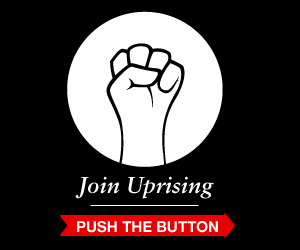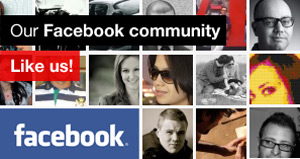The word on the street
Posted on 20th Mar 2012 by Mike Bayfield in Blog
At UprisingMovements.com, we welcome all different points of view - even if we don't agree with them. Thanks, Scott Goodson.
The Arab Spring. Occupy Wall Street. The London Riots. All of these events and many more – good and bad – seem to have at least one thing in common; the way in which ideas have been shared through social media. But mass movements have been around long before Mark Zuckerberg was in diapers, and recent research suggests that its role in their creation may be overstated.
According to Ed Keller of the Keller Fay Group, in his new book The Face-to-Face Book: Why Real Relationships Rule in a Digital Marketplace, “the vast majority of sharing occurs in the normal fashion, evidenced in real-world word of mouth.” Social media only actually accounts for about 10% of total word of mouth.
Malcolm Gladwell has famously downplayed the role social media plays in fuelling movements – even after its well-documented use during political uprisings in the Middle East. “People protested and brought down governments before Facebook was invented.”
He also argues that social media only creates weak ties between people, which means that they will be less likely to influence one another. There is no limit to the number off online friends or followers you can have, but there is a limit to the number of real relationships.
Robin Dunbar, professor of evolutionary anthropology at the University of Oxford, believes that human beings are only capable of nurturing an inner core of five close friends. He also postulates that the number of people with which we can hold close relationships is 150 – ‘Dunbar’s Number.’
And the evidence seems to back this up. The average user has 130 friends on Facebook, 126 followers on Twitter and 150 links on LinkedIn.
Online sharing platforms such as Buzzfeed and Stumbleupon recognise this. It’s not so much about the super-influencers with millions of connections, like Oprah and P.Diddy: Kony’s are incredibly rare. In both on and offline communications the key to spreading ideas is how information is shared amongst small groups of closely connected individuals.
The stronger the relationships between people in a network, the more resonance ideas will have. And relationships which are based in the real world, where people come together physically, will always be much stronger than virtual ones.
To create cultural movements, brands need to also think about how people interact physically in smaller groups on a local basis, and how they might enhance that. This is how the real power of movements manifests itself. Occupy Wall Street hasn’t just been happening on Wall Street, but in hundreds of city centres around the world. Recent leaked emails from Syria reveal that President Assad was advised to close down public squares for this very reason.
One famous worldwide organisation has been phenomenally successful in creating a cultural movement, through its own extensive network of local gathering points. They’re called churches.
Apple understands this very well too. Only 13% of all Apple products are sold through their stores. Their primary purpose is as physical shrines, attracting followers who believe in and will share the message.
Virgin has built its worldwide empire in many sectors as a consumer champion, challenging market-leading brands by promising to bring customers a better deal. A message people want to share. Their latest venture in financial services in the UK has been Virgin Money’s takeover of failed bank Northern Rock.
Before the first high street branch even opened, Virgin Money opened a small chain of ‘lounges’ in selected cities. These lounges don’t sell anything. You can’t pay money in, or take it out or get any financial advice. You can simply hang out, get a free coffee, surf the net, read a magazine. They’re places where people can come together. The kind of places where ideas can spread.
Whichever way they do spread, the bottom line will always be the ideas and messages themselves. Brands need to focus on content that that will resonate and get people talking to their colleagues, friends and families. To connect with your audience you need to create something that has real meaning in their lives, and then help them share it.
The power of social media is intoxicating, which means it’s very easy to get caught up in the buzz – like Pepsi in 2010 – but forget what the core messages are. Whatever the media though, the ideas will only spread if people believe in them passionately enough.
It could even be argued that social media may actually inhibit the formation of movements. By often replacing face-to-face communication ideas cannot be communicated as effectively as when using all the powers of human expression and emotion. The dynamics of any communication are very different when a group of people are all together in the same physical space. That cannot be replicated online.
With open easy access to social media channels, the proliferation of ideas has grown exponentially. But, with an hour’s worth of video uploaded to YouTube every second, what chance does yours have of cutting through?
And, paradoxically, ‘social’ media tends to be narcissistic. People like to talk about themselves. Brands can easily fall into the same trap too.
Social media is unprecedented in its ability to unleash new ideas on an unsuspecting world instantaneously, but brands aren’t built overnight. To start, grow and, most importantly, sustain movements, brands need to also look at how people share stories in the real world – around the dinner table, the water cooler or bar – not just the virtual one.
Offline word of mouth will always be slower than online, and much more difficult to measure. But what it lacks in speed and breadth it makes up for in depth and its power to help shape cultural movements should never be underestimated. Don’t confuse Klout with clout.
blog comments powered by Disqus







